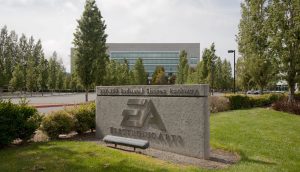In the third of this three-part strategy magazine feature adapted for Media in Canada, writer Jonathan Paul looks at the new ways in which digital technology is being used in retail in environments. (Read parts one and two.)
Proof positive that brands across the board are becoming more interested in playing with interactive media in the retail space is Starbucks’ recent dabbling with touch tech.
It created two such retail experiences at stores in Vancouver and Toronto as part of a four-week campaign promoting its Tazo line of teas. The screens, developed by The Media Merchants in Vancouver, MediaCom and Blast Radius, were developed as a retail/experiential crossover effort. Passersby and coffee clientele could navigate the interactive storefront displays to explore the ingredients in three different teas by using the screens to guide one of three creatures (a hummingbird, dragonfly or butterfly).
‘Clients can immerse parties in their brand with an interactive game, or gather information to better understand their needs, and they don’t even have to enter the store,’ says Brad Foster, president, The Media Merchants. ‘For a retailer like Starbucks, with the tier one real-estate their stores occupy, it makes an enormous amount of sense to leverage some of these locations for this purpose.’
Starcom’s Hassan, who says her team has been actively investigating interactive tech solutions, notes that three conditions must be met for her to consider such applications for clients: personalization of the experience for the customer, the promise of, and clarity on, the added value provided and, most notably, scale.
‘You can do something really unique, but if it’s just in one or two locations, how many people are you really impacting?’ she asks.
Cost has been a major factor when it comes to scale. For the Wind Mobile team, installing Microsoft Surface technology was not an inexpensive endeavour, costing $15,000 per unit for Surface version 1.0. Since then costs have fallen. It was announced at the CES in January that the soon-to-be released Microsoft Surface version 2.0 will retail for around $7,600.
‘I think reduced cost in installing these units is bound to mean improved scale across the country,’ says Hassan. ‘That will be critical to the adoption of digital retail tech by media planners, as it will also mean that ROI of creative development can be amortized more quickly and against more reach.’
Hassan predicts that interactive technologies will begin to become more prevalent in Canadian retail spaces in the next 18 months. The question, she says, will be whether they’ll be owned by the brands [like Adidas’ adiVerse] or the retailers.
Clear Channel has brought the interactive experience ‘out of home.’ It recently unveiled its first Spectacular Interactive Digital Advertising and Wayfinding Display at Toronto Pearson Airport in Terminal One as part of a live market test in collaboration with the Greater Toronto Airport Authority. The unit combines two tall, 1080p HD plasma displays with a retail promotional wayfinding module that features two interactive touch-screens.























